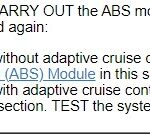Nissan Diagnostic Trouble Code (DTC) P1615 indicates a malfunction within the vehicle’s NATS (Nissan Anti-Theft System). This system utilizes a transponder chip in the ignition key to communicate with the vehicle’s Engine Control Module (ECM), verifying the key’s authenticity before allowing the engine to start. A P1615 code suggests a problem with this communication process, often preventing the engine from starting or causing intermittent starting issues.
Common Causes of Nissan DTC P1615
Several factors can contribute to a P1615 code, including:
- Faulty Key Transponder: A damaged or malfunctioning transponder chip in the ignition key can prevent the NATS from recognizing the key. This is a common cause, especially with older or worn keys.
- Key Programming Issues: Problems during the key programming process, such as a failed attempt or incomplete programming, can lead to communication errors and trigger a P1615 code.
- NATS Antenna or Wiring Problems: Damage or corrosion to the NATS antenna, which is typically located around the ignition switch, can disrupt the signal between the key and the ECM. Wiring issues between the antenna and the ECM can also cause this code.
- ECM Malfunction: In rare cases, a malfunctioning ECM can be the root cause of a P1615 code. This is less common but should be considered if other potential causes have been ruled out.
Diagnosing and Resolving Nissan DTC P1615
When faced with a P1615 code, the following diagnostic steps can help pinpoint the issue:
- Check the NATS LED: Observe the NATS indicator light on the dashboard. If the light remains illuminated or flashes rapidly when attempting to start, this confirms a NATS-related problem.
- Try a Spare Key: If available, attempt to start the vehicle with a spare programmed key. Success with the spare key suggests a problem with the original key’s transponder.
- Inspect the Key and Ignition Switch: Visually inspect the ignition key for damage and ensure it is properly inserted into the ignition switch.
- Check for Stored DTCs: Using a diagnostic scanner, retrieve all stored DTCs. While P1615 points to the NATS, other codes may provide additional clues.
- Inspect NATS Antenna and Wiring: Visually inspect the NATS antenna and its wiring for damage or loose connections.
Addressing Potential Fuel System Concerns
While P1615 primarily indicates a NATS issue, the original concern about fuel delivery should also be addressed. A soft primer bulb could indicate a fuel system leak. While tightening clamps and adding a check valve are good steps, inspect all fuel lines, particularly the loose return line mentioned, for damage or leaks. Replacing a damaged hose is crucial to ensure proper fuel system operation.
Conclusion
Nissan Dtc P1615 signifies a problem within the NATS, often hindering engine start. By systematically diagnosing potential causes, from key transponder issues to wiring problems, the root cause can be identified. Resolving the P1615 code, along with addressing any associated fuel system concerns, is vital for restoring reliable vehicle operation. Consult a qualified Nissan technician for further assistance if needed.

